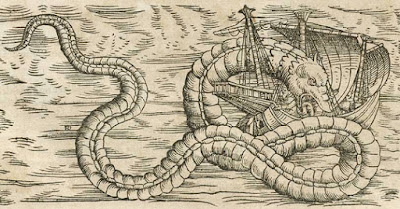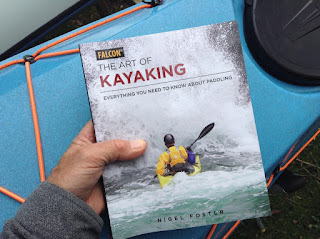Some journeys take us far from home. Some adventures lead us to our destiny.
Friday, November 24, 2017
OVER THE BOW: RED RIVER
And so for a time it looked as if all the adventures were coming to and end; but that was not to be. --- C. S. Lewis
I was hoping to get one more day in. Just one more day on the water. An early winter weather gloom hung over the river valley. The first snow had come early in October, followed by another dusting a week later typical and Fargo-like. The temperatures were plunging each night to that mystical point where water becomes ice. My season of days paddling was quickly running out on the Red River.
“There is one thing I should warn you about before you decide to get serious about canoeing, " said paddling guru Bill Mason in one of my favorite all-time quotes "You must consider the possibility of becoming totally and incurably hooked on it. You must also face the fact that every fall about freeze-up time you go through a withdrawal period as you watch the lakes and rivers icing over one by one. Cross-country skiing and snowshoeing can help a little to ease the pain, but they won’t guarantee a complete cure.”
When fall comes to the Red River Valley only the hardiest have yet to put away their canoes or kayaks for the season. The Red River was once again comfortable in its banks as its dark waters of flowed past the snow white covered shoreline creating a Christmas card like setting, insulated from the whir of traffic of the river's two cities.
A thin layer of ice from freezing rain coated my bow and water bottle as it froze on contact. While an even thinner film of ice had formed over the water along the edges of the meandering waterway. The sound of reverberation of radio static and breaking glass echoed over the peaceful river as the kayak's bow broke through the ice, a reminder of my coming to end to that years paddling season as the river way slumbered into its winter hibernation.
Over the Bow is a feature from Outside Adventure to the Max, telling the story behind the image. If you have a great picture with a great story, submit it to us at nickayak@gmail.com
Friday, November 17, 2017
THE KAYAK MURDER CASE
According to the Orange County District Attorney, it was no accident, it was a case of murder. A woman who admitted she helped cause her finance’s drowning death by removing a plug from his kayak before it to capsize on a during the Hudson River kayaking trip.
 |
| Angelika Graswald |
Viafore drowned while the couple was kayaking on April 19, 2015. Graswald, a Latvian national, admitted to pulling out the plug to Viafore's kayak before they set out on the river on a day when conditions were dangerous. She also admitted she was aware that the locking clip on one of his paddles was missing. She told them she was happy Viafore died, that she wanted to be free of him and knew she was primary beneficiary on two of his life insurance policies.
 |
| Vincent Viafore |
Her defense team said Graswald's statements were coerced by police during an 11-hour interview, that removing the kayak plug wouldn't have caused Viafore's kayak to capsize. Viafore also had a blood alcohol concentration of 0.066. and was not wearing a life vest or a wet suit and knew the springtime river waters were dangerously cold at the time.
“From the moment I was pulled from the water," said Graswald," They labeled me a defendant.”
 |
| Bannerman's Island on the Hudson River |
And while many expressed outrage in the justice system in what they felt was to light of a sentence for the crime in the New York Times Comments to last week's story. Some kayakers who responded, they maintain it was a tragic accident that could have been avoided and believe there is little substantiation to Graswald orchestrating Viafore’s death. Saying the lack of suitable kayaks to the rough conditions of the water, no PFDS or spray skirts and Viafore’s kayaking skills had more to due to his death than the lack of a drain plug.
"It is clear to me that most people don’t realize that the drain plug of a kayak is near the TOP of the kayak at one of the ends," wrote Jim from Pennsylvania, "Not submerged below the water line. To use it to drain water, you have to take the kayak out of the water, flip it upside down, and lift one end before waiting a few minutes while water trickles out a hole smaller than a quarter. You could kayak around all day with an open plug and not take on any water. The notion that this woman sabotaged his kayak by removing the plug is nonsense."
Another writer emphasized the lack of items that should always be used to kayak safely. Betsy in Maryland wrote, "As a longtime kayaker, I’ve been following this case somewhat and really don’t understand why she plead guilty. That guy didn’t drown because the drain plug was out of the kayak, he drowned because he was out on the river without a PFD, a spray skirt, and a wet suit during a time of year when the river water was cold, in a boat that wasn’t adequate for the conditions. All of those factors were in that guy’s control. He just made a series of very bad decisions. She didn’t sound like she was a very accomplished paddler, so I’m guessing that she had her hands full just trying to keep herself upright.
 |
| Angelika Graswald and kayak |
 |
| Viafore's kayak model |
And Pete from New York commented on the court's deficiency of understanding of the practice of kayaking in general "This story seems very odd to me. I am a class 4-5 whitewater kayaker with 5 years experience teaching. As said by other, the mistakes here would be going out without a PFD, going out in rough weather without a spray skirt and drinking before going kayaking. I just don't see any proof that a crime was committed here and I'm surprised that these pieces of evidence were even allowed in court."
So while the headlines screamed Kayak Murder, many in the paddling community speculate there is no way Graswald engineered Viafore’s death. And think though tragic, Viafore’s death was of his own making.
"This entire process has been incredibly difficult for me," wrote Graswald to the court, I love Vince very much and miss him terribly. When we went kayaking that day my intention was for both of us to come home.”
Friday, November 10, 2017
A MAN, HIS CANOE AND ALL FIFTY STATES
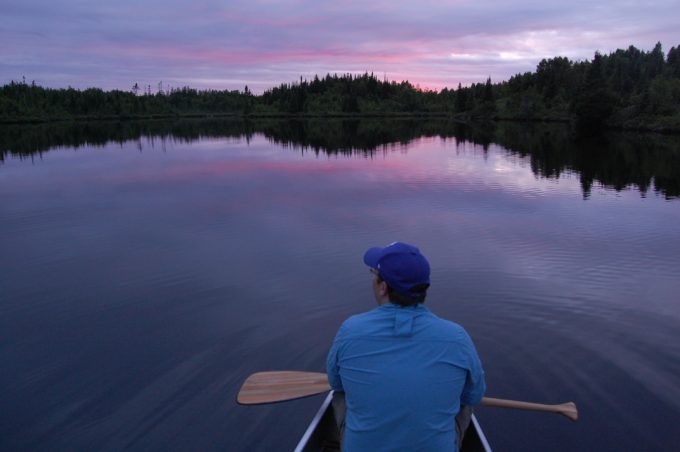 |
| Photos by Eric Straw |
BY OUTSIDE ADVENTURE TO THE MAX GUEST BLOGGER ERIC STRAW
I already miss the rivers. It’s true, even after just returning from paddling a natural body of water in every state. Fortunately, as I discovered on my Canoe 50 Campaign, I don’t have to venture far to find a river. None of us do. From Delaware to the Dakotas and from Mississippi to Montana, every state in the union has a place to paddle, explore, and discover nature anew.
From Delaware to the Dakotas, every state has a place to paddle, explore, and discover nature. I have a multitude of stories and takeaways from my half-year excursion. Fresh off the water, here are a few that stick out. First off, I believe, more than ever, that our riparian areas are proper focal points for protection and barometers for overall ecosystem health; they are worth seeing, they are worth protecting and they are — along with our diverse population — what makes our nation exceptional.
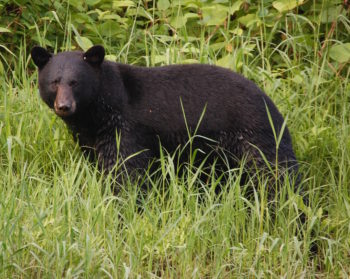 |
| Pine Creek Canyon, Pennsylvania black bear. |
Paddling down Pine Creek Canyon, Pennsylvania, I floated under passing white clouds, above the glinting water and between the steep canyon walls cloaked in green. The evening set in with a warmth only a fine summer day can provide. Then I saw it — 200 yards down river — the unmistakable shape of a black bear. Trying to calm my excitement, I put on my zoom lens as the bear began crossing Pine Creek. In silence, I canoed downstream as the bear reached the opposing bank and began walking along the shore, towards me. Soon, I was only 30 feet from 300 pounds of fur, teeth, and claws. At a loss for creativity, I called out “Hey bear!” The lumbering creature stopped, turned and looked right at me before disappearing behind a wall of shaking leaves. I passed over the next riffle, dumb grin plastered upon my face. While the spell of baseball cards wore off long ago, I doubt the spell of wildlife ever will.
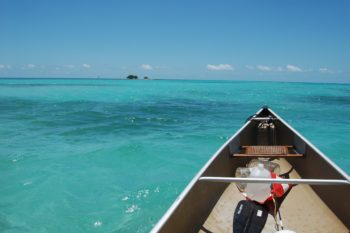 |
| Eric paddling around the Florida Keys. |
Now, like most of us, I have many frustrations with our political climate and the normalization of viewpoints that trend in frightening directions. On the nature side alone, I think it’s a shame that the mere word environment has become so polarized. It’s a shame professing a love of nature might somehow instigate a vicious political argument. It’s a shame people feel they need to be either on the side of the economy or the environment, as if improving either inherently destroys the other.
 |
| Cormorants at the mouth of the Mispillion in Delaware. |
Along with all the human interactions, the memories of the waterways I canoed will endure. Setting out, I was almost more excited about visiting the unassuming, low tourism budget states than the postcard destinations. Instead of finding mundane, unattractive water bodies, I was floored by the scenic rivers and unsung wilderness areas in states rarely noted for their natural beauty. In April, I swam in the clear black water stream on a Wild and Scenic River in Southern Mississippi. In May, I saw thousands of arctic migratory Red Knots gather by spawning horseshoe crabs at the mouth of the Mispillion in Delaware. In June, I surprised a family of river otters, playing in a shallow riffle, in the hills of Ohio. So on and so forth. My canoe quest was a never-ending showcase of American splendor in places you would and wouldn’t expect.
Classic beauty isn’t the reason our rivers deserve our respect and stewardship. Ecosystem health, human well-being, ad an array of non-aesthetic factors are as essential. But, boy does it help to stir hearts and open wallets when you realize how stunning our rivers are to behold. I’ve raised money for American Rivers throughout my journey because I believe our nation needs this kind of organization to raise the profiles of endangered waterways and protect natural places, from the unassuming to the majestic. I believe America’s rivers and wild lands are what make us exceptional and they’re worth protecting — grab a paddle and go see for yourself.
Eric Straw in a Texas based paddler on mission to canoe a body of water in all 50 states over 2017. He started last April on Brazos River and according to his November blog post has only 6 states left after paddling on Pyramid Lake in Nevada. You can catch up with Straw on his blog and read more of his state by state adventures at www.shamelesstraveles.com. and on Instagram
You can also help Straw reach his fund-raising goal for American Rivers by donating here.
Outside Adventure to the Max is always looking for guest bloggers. Contact us at Nickayak@gmail.com if you are interested.
Friday, November 3, 2017
LIGHT SWITCH
The world is big and I want to have a good look at it before it gets dark.--- John Muir
It's fall back time. This Sunday, Nov. 5 at 2 a.m., the time flips back an hour to standard time. Great if you are an earlier riser in this light switch from evening to morning. However, losing the hour at the end of the day always surprises me. I'm not ready for the darkness, as the sun seems to slam into the horizon before my eyes. Exploding into little bits before disappearing into the night.
“There are very few things in the world I hate more than Daylight Savings Time," said author Michelle Franklin, It is the grand lie of time, the scourge of science, the blight on biological understanding.”
She is right of course as many who don't enjoy the practice of Daylight Savings will attest. We don't lose or even gain for that matter a dose of sunlight with the time change, we lose it astronomically as the sun approaches its southernmost position, aka the winter solstice, the shortest day of the year in the Northern Hemisphere.
Still losing that golden hour at the end of the day seems unforeseen and unexpected for me. I can remember a fall paddle on the north arm of Folsom Lake. I had gotten a late start when I slid my kayak into the water on the south side of Doton's Point. The sun was already dipping behind some clouds and hovering over the horizon. It would be a race against it to see if I could finish before it set.
Now I had won the contest against the setting sun many times before while on summer nights camping. I would paddle out across the water watching that giant orange ball dissolve into the lake while I still have enough light to paddle back to the beach and light the campfire before nightfall. Twilight lingers in the summer, but not in autumn.
This time I was humbled. I didn't beat the night. I had paddled out too far and still had to come back. I tried to hurry back as fast as I could. My fingers and feet tingled as I pressed into the foot pegs and paddle. But, no matter how fast I tried to paddle, the sun was gone and night had prevailed.
As a full moon rose over the foothills, I paddled back along the shoreline towards the lights of Folsom Dam. The land and water amalgamated into the murkiness of the night. I can't say I was lost. I pretty much knew the lake and how to get back. But, without my headlamp, it was more like fumbling around in a dark bedroom trying to find the light switch. My truck was out there, I just had to find it.
The moonlight glistened on the water as I paddled up to Donton's Point. In the shadows, I could make out the silhouette of the truck's body parked along the beach. I was back at my starting point tired and a little relieved. I loaded up and drove away thinking, I better get an earlier start next time. It was only a little past 6 p.m.
That one-hour daylight switch from evening to morning as we fall back to standard time begins this weekend. We don't go back to daylight saving until Sunday, March 11, 2018, about a week before spring begins.
Fire Closes Boating on Oregon River
 |
| Photo courtesy of North Umpqua Outfitters |
Forest Service officials said the decision was for safety after wildfires burned numerous trees along the stream sighting those trees will likely fall into the river during fall, winter and spring storms, creating dangerous hazards in what’s already a rapid-filled section. Local outfitters are frustrated by the decision and called the closure length unnecessary and arbitrary.
 |
| Photo Courtesy of Randy Lathrop |
The New York Times reported after Hurricanes Harvey and Irma battered Florida, one Florida man came upon a what may have appeared to be a large piece of driftwood while riding his bike near the shore in Cocoa. it turned out to be an old cypress wood dug canoe. The boat could be hundreds of years old says state authorities, who are working to learn the canoe’s origins.
Friday, October 27, 2017
LAKE MONSTERS TALES FROM THE DEEP
I am therefore a ready believer in relics, legends, and local anecdotes of goblins and great men, and would advise all travellers who travel for their gratification to be the same. What is it to us whether these stories be true or false, so long as we can persuade ourselves into the belief of them and enjoy all the charm of the reality? -- Washington Irving
A body of water can be a downright terrifying place. Looking straight down into its murky depths any sailor, fisherman or kayaker can't help but wonder what lurks below. Unexplored storm-tossed seas and our deepest unforgiving lakes expose our innermost fears. Add a blend of cultural folklore and eyewitness accounts and our imaginations and curiosity are sparked by an opportunity into the unknown as we scan the water's surface for sea monsters
The centuries-old legends of lake creatures and modern-day tales of sea monsters are irresistible mysteries to us all especially when there is no way to disprove they exist. Science says they don't. But, seeing is believing. Here are few places you just might want to paddle (if you dare) this Halloween or anytime, for your chance to glimpse a sea monster.
Loch Ness, Scotland.
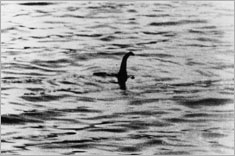 |
| © Hulton Archive/Getty Images |
"About 30 feet in length, and nearly 10 feet in height from the water to the top of the back." Val Moffat told NOVA about his face to encounter in 1990, "It was a bright, sunny day, the water was bright blue, and it really showed up against it. It was a mixture of browns, greens, sludgy sort of colors. I looked at it on and off for a few seconds, because I was driving. Must have seen it three or four times, and the last time I looked, it was gone!"
Lake Windermere, England.
Called Bownessie, the younger and less famous of Britain's sea monster lives in shadow its famous cousin, the fabled Loch Ness Monster in northern England. In 2011, two Brits told the Daily Mail that they spotted three or four mysterious humps emerging from the water while they were kayaking.
"I thought it was a dog," Tom Pickles said, "Then I realized it was much bigger and moving really quickly. Each hump was moving in a rippling motion and it was swimming fast. I could tell it was much bigger underneath from the huge shadow around it."
"Its skin was like a seal's, but its shape was abnormal," said his paddling partner Sarah Harrington it's not like any animal I've ever seen before. We saw it for about 20 seconds. It was petrifying. We paddled back to the shore straight away,"
But, not before getting a fuzzy camera phone picture.
 |
| Heaven Lake |
The lake is the deepest and the largest crater lake in on the China and North Korea border. It is also the home of Lake Tianchi Monster. The first reported sighting came back 1903 when a large mouthed and buffalo-like creature attacked three people. They were only saved after the creature was shot six times and retreated under the water. More than hundred people reported seeing two monsters chasing each other in 1962 while in 2007, a Chinese TV station shot 20 minutes of video of six unidentified creatures.
"They could swim as fast as yachts and at times they would all disappear in the water. It was impressive to see them all acting at exactly the same pace, as if someone was giving orders," said TV reporter Zhuo Yongsheng, "Their fins, or maybe wings were longer than their bodies."
Lake Utopia, New Brunswick Canada
Local legend that has span centuries, says that the lake is inhabited by a sea monster known as“Old Ned." It seems the monster has a dislike for canoeists. One of the first sightings came a long time ago when two Maliseet Indians were canoeing on the lake and suddenly a terrifying eel-like monster with a large head and bloody jaws appeared chasing them to the other end. 1891, a logger gave this description of a creature, "It was dark red in colour, the part showing above the water was 20 feet long and as big around as a small hogshead; it was much like a large eel."
In 1996, you guess it canoeist spotted the creature again, measuring “30 to 40 feet” as it swam just under the surface, “up and down” not “side to side," as eels would swim.
Lake Champlain, New York, Vermont & Quebec
Champy is the American cousin to Loch Ness' Nessie. Described by Captain Crum 1819 in an account in the Plattsburgh Republican as a black monster, about 187-feet-long and with a head resembling a seahorse, that reared more than 15 feet out of the water. He claimed the monster also had three teeth, eyes the color of "a pealed onion," adorned with a white star on its forehead and "a belt of red around the neck."
In July 1873, Clinton County's Sheriff, Nathan H. Mooney, reported seeing an "enormous snake or water serpent." A month later, the steamship W.B. Eddy had a close encounter Champy by running into it. According to the passengers on board, the ship nearly capsized, which prompted circus showman P. T. Barnum offered a reward of $50,000 for "hide of the great Champlain serpent. Ever since approximately 600 people have claimed to have seen Champy.
Lake Norman, North Carolina
Just last summer, a 35-year-old Mecklenburg County man told CryptoZoology he spotted a “dinosaur-like creature” while traveling on a boat with friends. He claimed the creature was about 10-feet-long and reminiscent of the mythical Loch Ness monster.
Sightings date back nearly 50 years on the largest man-made lake in North Carolina and have become more common in recent years. A few dozen witnesses have posted their sightings on LakeNormanMonster.com, like this one from John Edds of Huntersville, “I was on a boat when a huge force from below knocked me overboard,” he wrote, “I got back on to my boat when I saw a Nessie-like sea monster swimming away from me. It looked about 15 feet long.” While another post came from a man and his girlfriend who saw the creature while jet skiing who wrote, “We both saw a large body come to the surface. It was dark, and shiny in some spots but was at least 14-ft long. We both were scared to death. She is now scared to swim there."
Lake Pepin, Minnesota & Wisconsin
The monster called Pepie is described as a large, serpent-like creature that lives in the shadowy depths of Lake Pepin, a lake occurring naturally at the widest part of the Mississippi River. First witnessed by river rafters in 1867, Pepie made an even a bigger splash four years later when the Wabasha County Sentinel, reported, “a marine monster between the size of an elephant and rhinoceros, moving with great rapidity.”
Sightings of the creature have continued over the years contributing to the local folklore. It is said that on a moonlit night in 1922, young Ralph Samuelson saw Pepie skimming across the lake and thought, “If a large aquatic creature can skim across the water’s surface, why can’t I?” which led to the idea behind the sport of water skiing and Lake City, Minn., is now forever known as “the birthplace of water skiing."
In 2008 businessman Larry Nielson made monster watching profitable by offering a $50,000 reward for conclusive proof of Pepie's existence as a ploy to garner tourism in the Lake City area. So far no one has collected the bounty.
Lake Tahoe, Nevada & California
Tales of an up to 80-foot-long jet black serpentine creature dates back to the Gold Rush when members of area Indian tribes warned settlers about a monster dwelling in an underwater tunnel beneath Cave Rock in the famed alpine lake.
In 1865, I. C. Coggin a got first-hand look at the creature from a treetop. In 1897, he told the San Francisco Call newspaper this chilling account.
 |
| Lake Tahoe |
Tales of an up to 80-foot-long jet black serpentine creature dates back to the Gold Rush when members of area Indian tribes warned settlers about a monster dwelling in an underwater tunnel beneath Cave Rock in the famed alpine lake.
In 1865, I. C. Coggin a got first-hand look at the creature from a treetop. In 1897, he told the San Francisco Call newspaper this chilling account.
“I heard a sound as if the dead limbs trees, willows and alders that grew in the canyon were being broken and crushed. Soon the monster appeared, slowly making his way in the direction where I was hidden in the tree top and passed on to the lake within 50 feet of where I was, and as his snakeship got by I partly recovered from my fright and began to estimate his immense size."
Not stopping there he continued with his eerie tale, "After his head passed my tree about 70 feet, he halted and reared his head in the air fifty feet or more. His monstrous head was about 14 feet wide and his large eyes seemed to be almost eight inches in diameter and shining jet black and seemed to project more than half the size from his head. The neck was about ten feet and the body in the largest portion must have been twenty feet in diameter."
The headline in the paper screamed Lake Tahoe's Big Serpent and the word of Tessie spread just like the saying, "There is gold in them hills!" Over the decades, off-duty police officers, fishermen, bartenders and kayak instructors have all reported seeing an unusually large creature swimming in the lake.
In the 1970's it is said that renowned, French oceanographer, Jacques Cousteau wanted to see for himself. In a mini-submarine, while exploring the depths of the lake he reportedly encountered something so horrifying that all he could not even bring himself to talk about it saying, "The world wasn't ready for what was down there!"
 |
| Courtesy of The Daily Inter Lake |
So while these lake monsters have evaded our detection, they have captured our imaginations providing us with an opportunity to have an adventure searching for them.
A few other famous lake monsters: Bear Lake Monster, Bear Lake, Utah & Idaho, Manipogo, Lake Manitoba, Canada, Cressie, Crescent Lake, Newfoundland, Memphre, Lake Memphremagog, Vermont, Nahuelito, Nahuel Huapi Lake, Argentina, Ogopogo, Okanagan Lake, British Columbia, Ray, Raystown Lake , Pennsylvania,Bessie Lake Eerie, Vermont & Quebec, Storsjöodjuret, Lake Storsjön, Sweden and Lake Van Monster Lake Van, Turkey.
Friday, October 20, 2017
AUTUMNAL PALETTE & PADDLE
I am struck by the simplicity of light in the atmosphere in the autumn, as if the earth absorbed none, and out of this profusion of dazzling light came the autumnal tints. ---Henry David Thoreau
It was what I call a Thoreau type morning. A chill in the air, colors blazing and the lake water was as smooth as glass on a calm October morning. At the water's edge a thin line between the absoluteness of the shoreline and its upside-down illusory reflection. It seemed as I was destroying a cherished work of art as the bow of my kayak fractured the water's surface sending it into a thousand splinters with each ripple with each forward stroke. In was the distance the slight hum of traffic a reminder of frenzied away from this solitude, ahead of the quiet and nostalgic feel of autumn's embrace.
 |
| Maplewood State Park. |
In 1845, he set out to live a simple and solitary life on the banks of Walden Pond near Concord, Mass. It was there that he would write his best-known works, Walden and Civil Disobedience in penciled scribbled notes giving meditative descriptions of the sights, sounds, smells and things around him. The woods and lakes seem to inspire and invigorate him.
Later in life, he would celebrate the seasonal change of fall and the continuing cycle of nature by welcoming it by and giving us a way to see every autumn. "Visible for miles, too fair to be believed," he proclaimed, "If such a phenomenon occurred but once, it would be handed down by tradition to posterity, and get into the mythology at last.”
 |
| Mille Lacs Kathio State Park |
Four simple tips for anyone looking to extend the length of their paddling season into the winter months.
- Wear your PFD!
- Layering up against the cold.
- Familiarize yourself With rescue techniques
- Be well fed and hydrated when paddling.
"October is the month of painted leaves." wrote Thoreau, "Their rich glow now flashes round the world. As fruits and leaves and the day itself acquire a bright tint just before they fall, so the year near its setting. October is its sunset sky; November the later twilight."
It all proves paddling in the fall might take a little more planning and preparation, but the season's beauty and splendor make it all worth it.
Celebrate Sixty
Our friend, Dan Crandall at Current Adventures Kayak School and Trips, a veteran of countless trips down the Grand Canyon is turning 60-years-old in 2018 and wants you to come along for the party.
 |
| Courtesy of Current Adventures. |
Join Crandall and his experienced guides from Current Adventures and Grand Canyon outfitter partner AZRA on August 29-September 11th, 2018 ( 14 days) as they deliver you to the unequaled splendor and solitude of one of the worlds greatest treasures.
If you want to go
Current Adventures Kayak School and Trips
PHONE: 530-333-9115 or Toll-Free: 888-452-9254
FAX: 530-333-1291
USPS: Current Adventures, P.O. Box 828, Lotus, CA 95651
info@currentadventures.com
owner Dan Crandall dan@kayaking.com
Friday, October 13, 2017
THE ART OF KAYAKING MEETS THE SCIENCE
 |
| Photos provided by Nigel Foster |
By Outside Adventure to the Max Guest Blogger Nigel Foster
My mantra is to achieve the greatest effect with the minimum effort. I find efficiency seductive but to best achieve this I need to start again with the basics. Efficient paddling makes use of the body’s most powerful muscle groups to do the bulk of the work powering the kayak, with good posture ensuring the most effective alignment for performance.I also try to maximize the traction from my paddle in the water so I can power forward or make smooth turns without wasting energy. I want to make my kayak move forward; I don’t want to use my energy to move water.
 |
| Edging in a turn, the blade here is in neutral |
Basic science can explain why in some kayaks it doesn’t seem to make any difference whether you edge into a turn or edge away from it, both seem equally effective, while in some other kayaks you can clearly turn more quickly when edged into a turn, or in others most quickly when edged from a turn.
It will also explain why you can turn some kayaks more rapidly while reversing than when you are paddling forward.
It’s a good idea to hone the effectiveness of your paddling skills on flat water where you can focus on mastering the details even if your normal playground is far from flat. It is easier to compare the effect of every nuance once you eliminate the variables of wind, current and waves. With control strokes, begin with the blade close to or in a neutral position, engaging the blade gradually and only as much as you need.
 |
| The blade is lightly engaged for steering |
When you understand how to get the most effective performance from your kayak in wind alone, or in waves or current alone, then the next step is to combine them, wind and waves together, or all three.
 |
| Work on your efficiency in different conditions |
I’ll leave you with three questions. Revisit one of them when you next paddle.
1) Can I improve the efficiency of my body movement for power? For example, can I use my torso more and my arms less? Am I using my legs and feet?
2) How much do I move water with my paddle, and when do I do this most? Can I reduce this, maybe by slowing my paddle stroke a little, or by adjusting the path of my paddle?
3) Am I working against the waves, wind, and current, or working with? If I can identify a particular situation when I have to work harder than I would like, can I find a way to use less effort in this situation?
My new book The Art of Kayaking offers a lot of detail for the inquisitive paddler, explained in a way that is easy to understand. It describes in detail the basic paddle and kayak skills, and then focuses their use toward different rough-water environments. The goal is to achieve more effect with less effort. You’ll also find help for trip planning with weather, charts, buoy age and safety.
Find The Art of Kayaking at store.nigelkayaks.com, (there is a signed copy option) Or support your local bookstore, or order on-line, perhaps at Amazon or Book Depository.
Nigel Foster is an English sea kayaker, kayak designer, instructor and author. His other books with FalconGuides include On Polar Tides, and Paddling Southern Florida. Foster presently lives in Seattle, WA with his wife Kristin Nelson. You can contact him through his web-site at www.nigelkayaks.com.
Outside Adventure to the Max is always looking for guest bloggers. Contact us at Nickayak@gmail.com if you are interested.
Nigel Foster is an English sea kayaker, kayak designer, instructor and author. His other books with FalconGuides include On Polar Tides, and Paddling Southern Florida. Foster presently lives in Seattle, WA with his wife Kristin Nelson. You can contact him through his web-site at www.nigelkayaks.com.
Outside Adventure to the Max is always looking for guest bloggers. Contact us at Nickayak@gmail.com if you are interested.
Subscribe to:
Comments (Atom)












